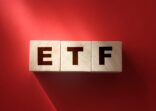The passive fund, the Bloomberg Barclays China Treasury + Policy Bank Bond Index ETF, tracks the Bloomberg index which is comprised of renminbi-denominated treasury and policy bank bonds issued in China. The three policy banks are: The Agricultural Development Bank of China, China Development Bank, and the Export-Import Bank of China.
Frank Zhang, CEO of ChinaAMC, believes the inclusion of China onshore bonds in a widely-tracked index will increase appetite from global investors for the asset class. Moreover, investment grade government bonds would be a primary option for foreign investors because of its higher level of liquidity and lower credit risk.
In China, an increasing number of corporates failing to repay their debts have raised concerns that domestic defaults will spread. There are already 19 credit default cases year-to-date, cumulatively accounting for loans of RMB 7.06bn ($1.1bn), compared with 17 in the full year of 2017, according to mainland research firm Wind. The most recent default is China Energy Reserve and Chemicals Group.
Commenting on the defaults in onshore bond market, Zhang said the financial and investment markets will eventually benefit from the consolidation of different industries induced by the debt defaults.
“The rapid growth in China’s economy justifies the increase in default cases. Following high-speed growth in the past years, some companies suffering a credit default is a natural process of the economy, along with the government’s pledge in deleveraging.”
He expects the defaults may have a short-term negative impact on the domestic economy.
The bond constituents of the firm’s ETF have at least one year to maturity and are available on the China inter-bank bond market. According to Zhang, the bonds tracked by the index currently have an average duration of five years and a portfolio yield of 4%.
He said the interest rate cycle in China is different from the rest of the world and expects the 5-year duration of the fund is appropriate for an index that tracks a considerable number of bonds.
In Hong Kong, ChinaAMC manages nine funds, four of them are exchange-traded products. The ChinaAMC Bloomberg Barclays China Treasury + Policy Bank Bond Index ETF is the firm’s first fixed income passive product.
Index inclusion
In March, Bloomberg revealed plans to add China’s RMB-denominated government and policy bank securities to the Bloomberg Barclays Global Aggregate Index. They will be phased in over a 20-month period beginning in the second quarter of 2019.
The announcement of onshore bond index inclusion has also lifted global manager interests in launching China bond products and expanding their foothold in China bond space.
Last week, Aberdeen Standard Investments launched a Luxembourg-domiciled fund investing in renminbi-denominated onshore bonds issued by government, policy banks and quasi-sovereign entities.
BNP Paribas Asset Management told FSA in an earlier interview that it has plans to hire locally-based experts to cover the asset class. It plans to add at least two more mainland-based China bond analysts.
The volume of outstanding China treasury bonds was RMB 12.4trn ($1.94 trn) at the end of April 2018, according to data from China Central Depository and Clearing.
Foreign ownership of the bonds reached RMB 780.8bn, or around 6.3% of the market.

















